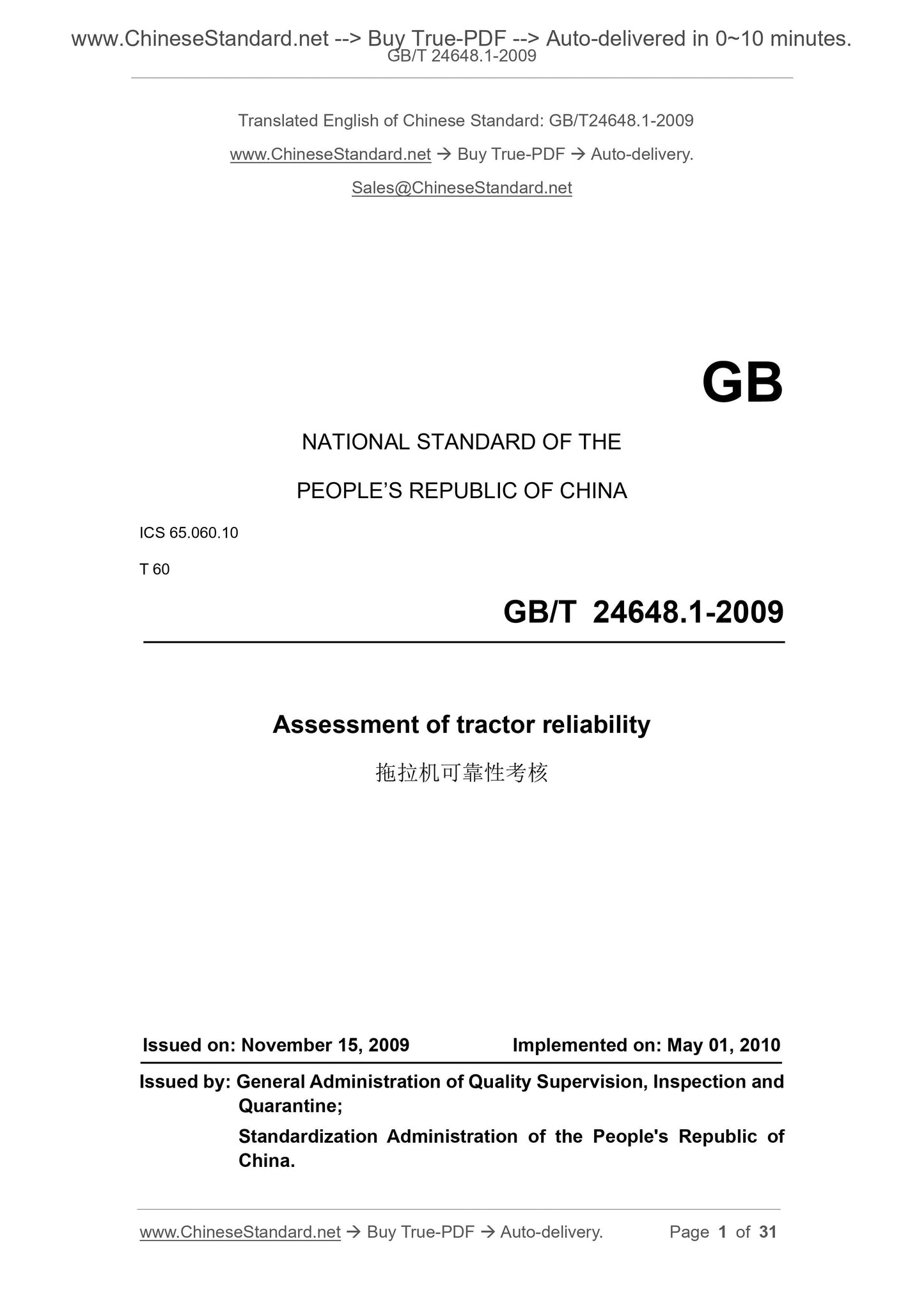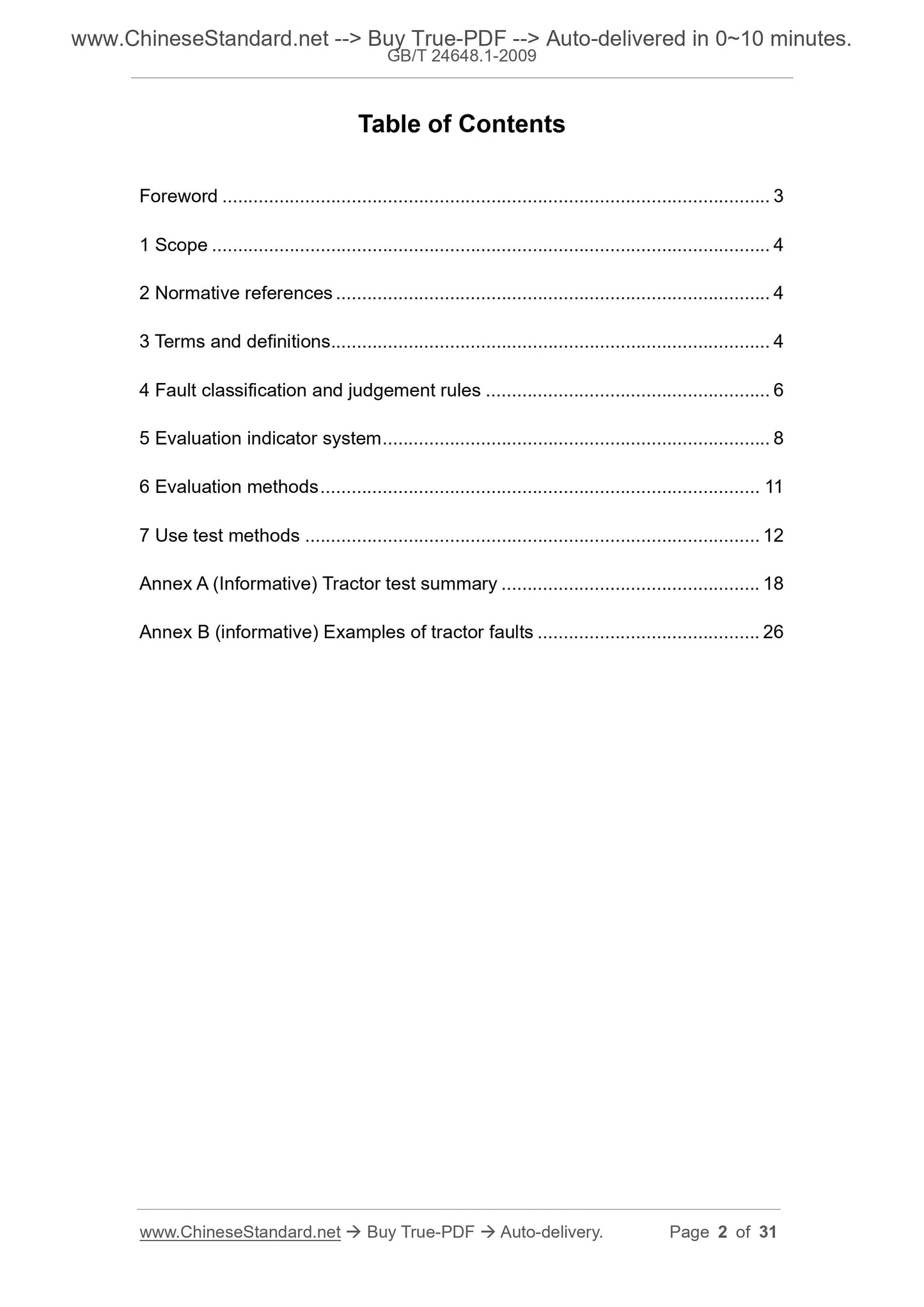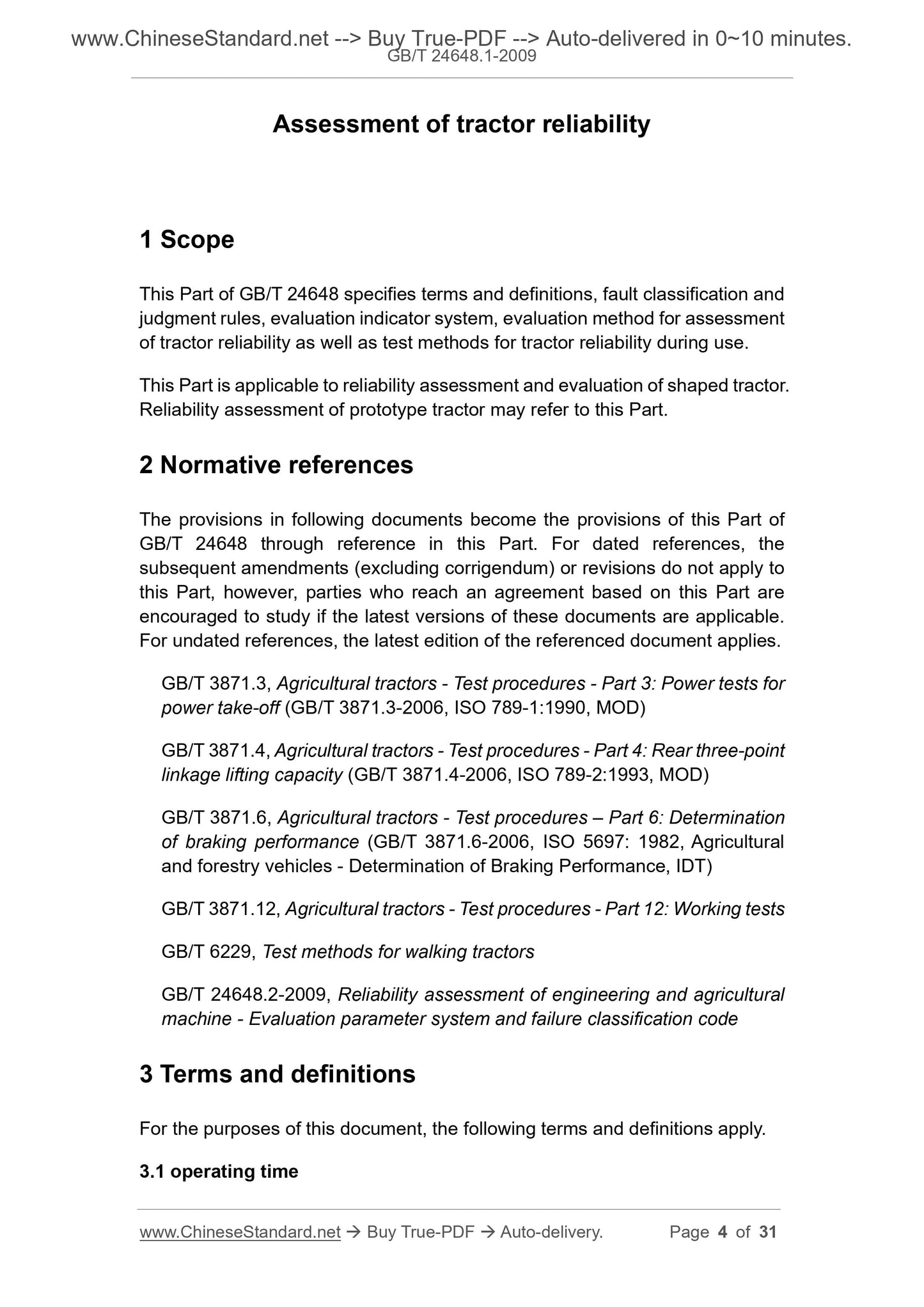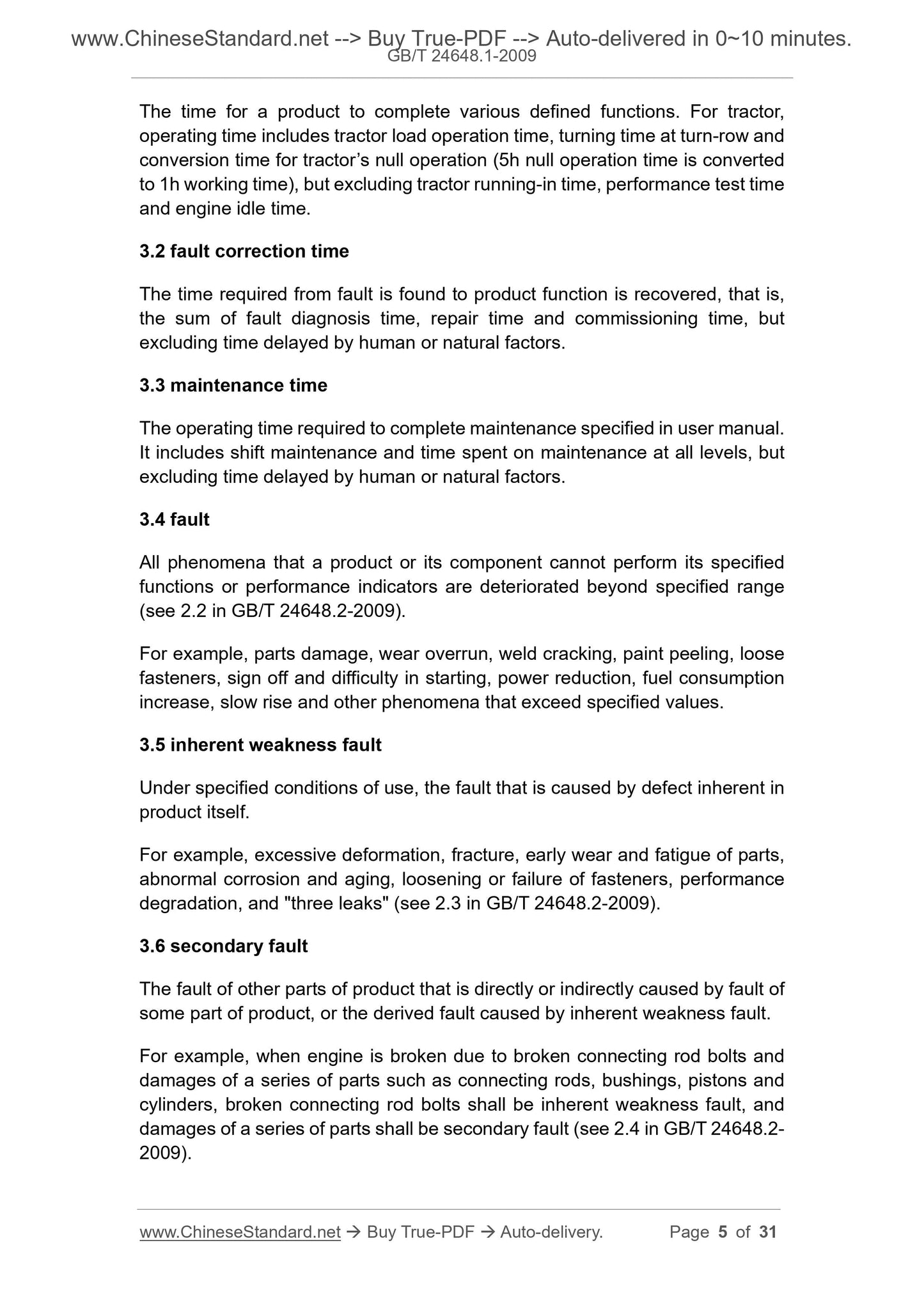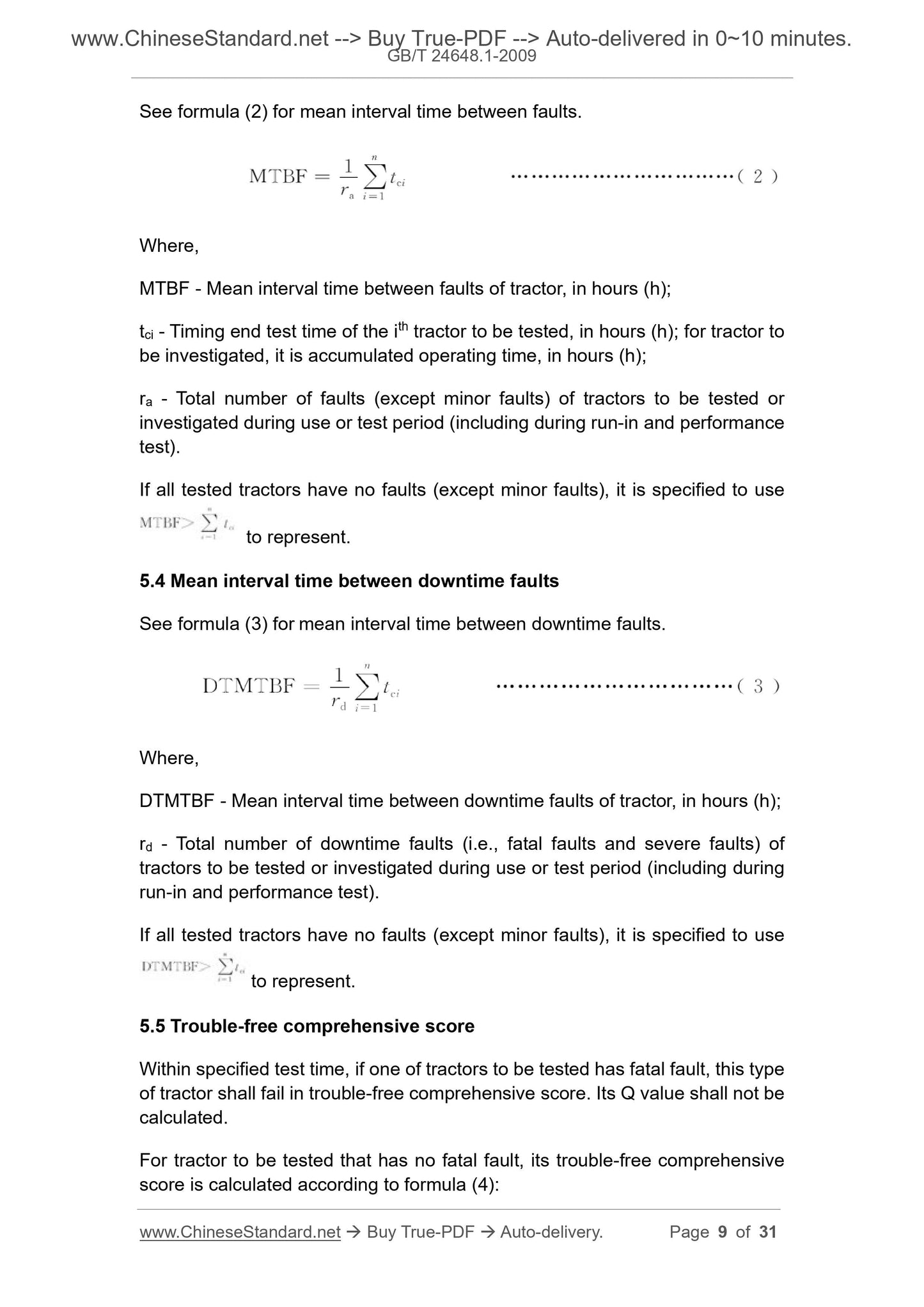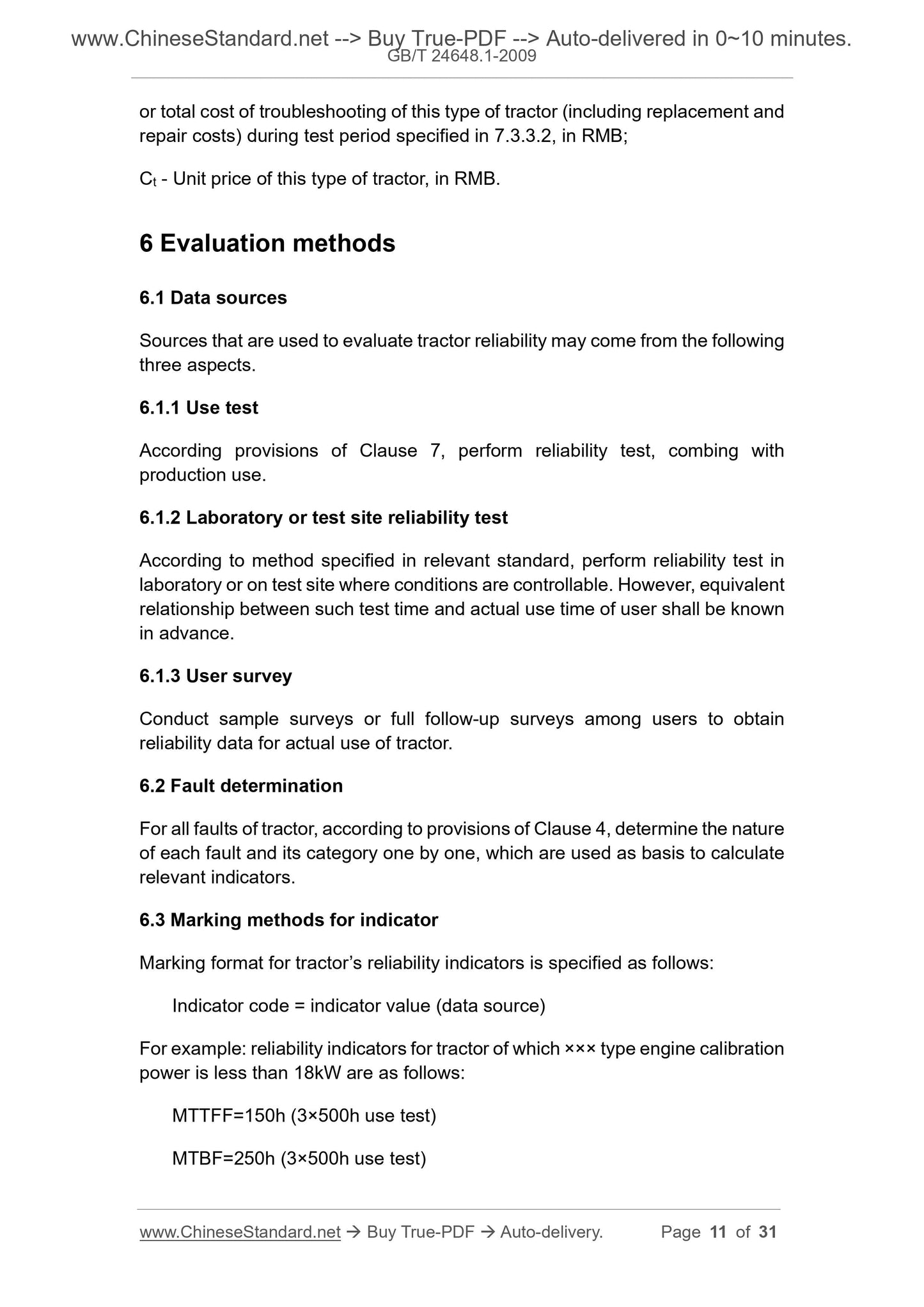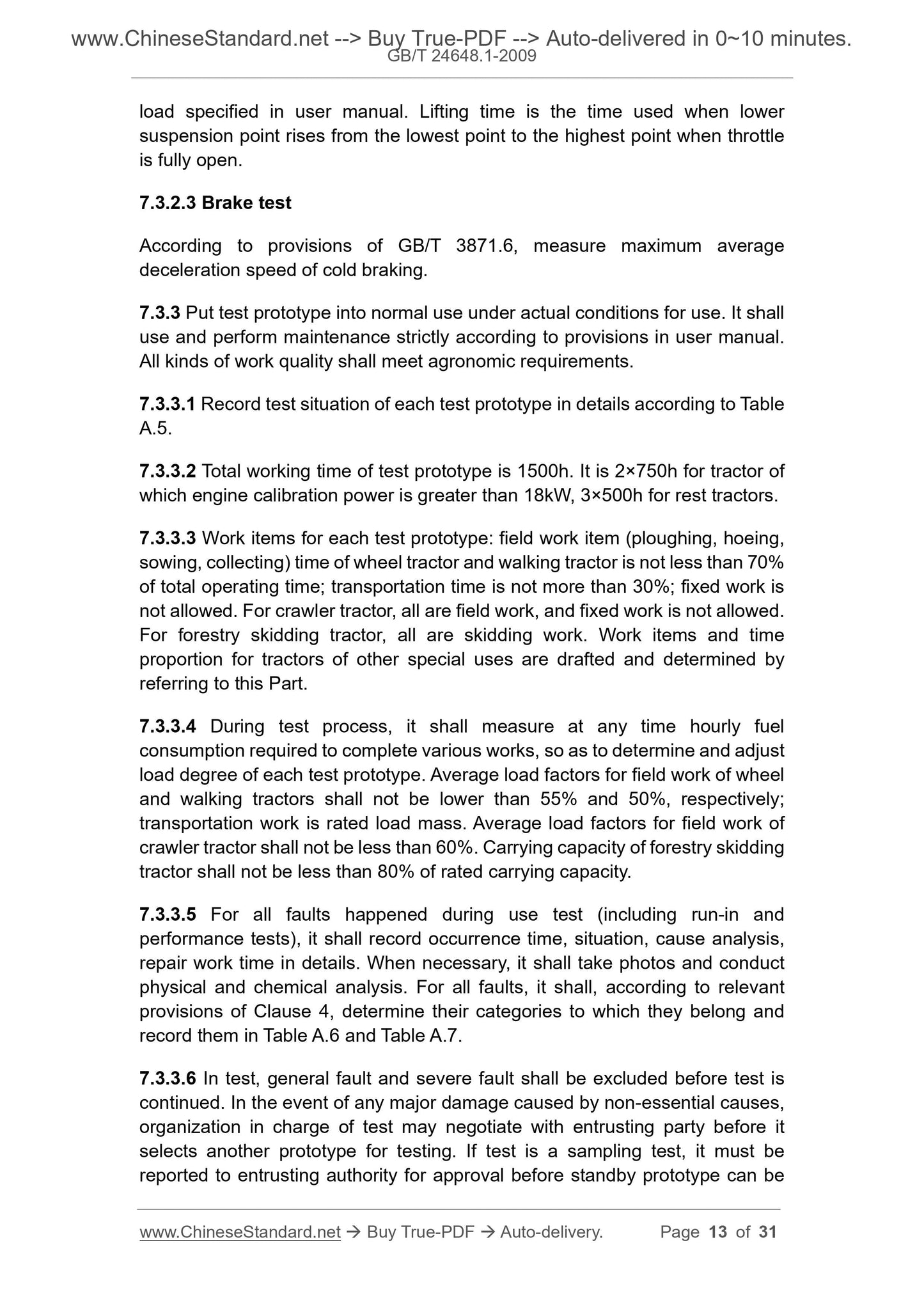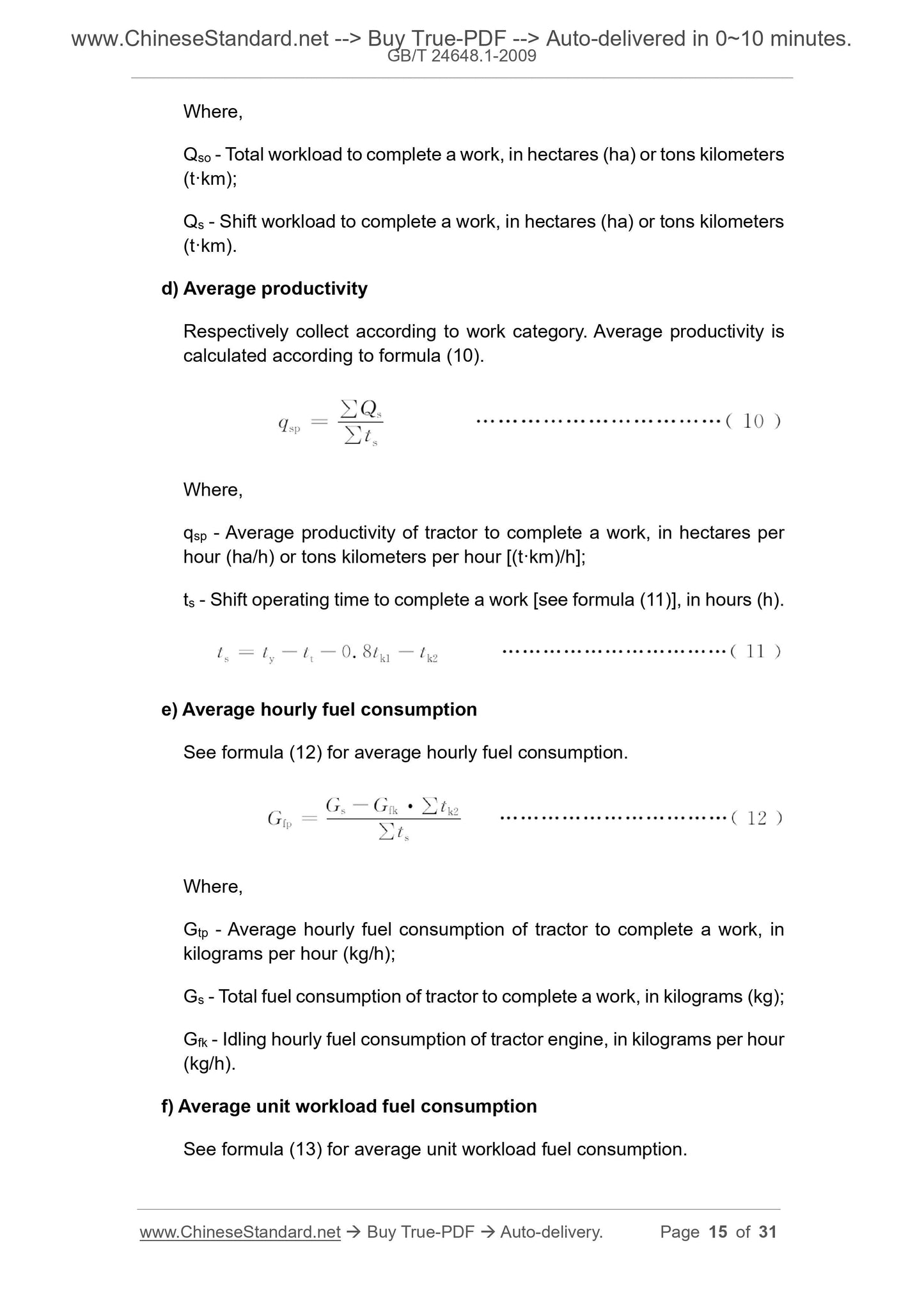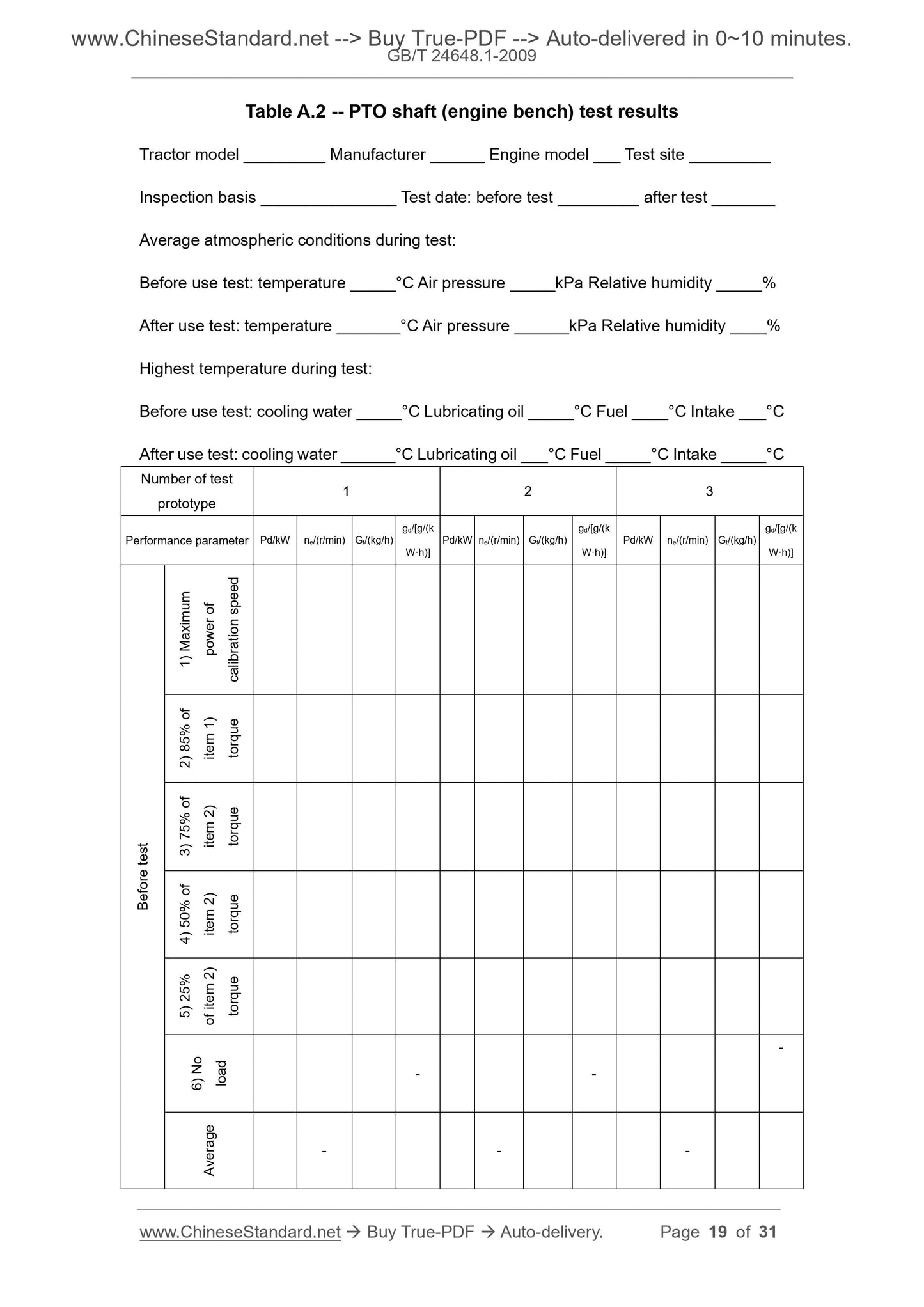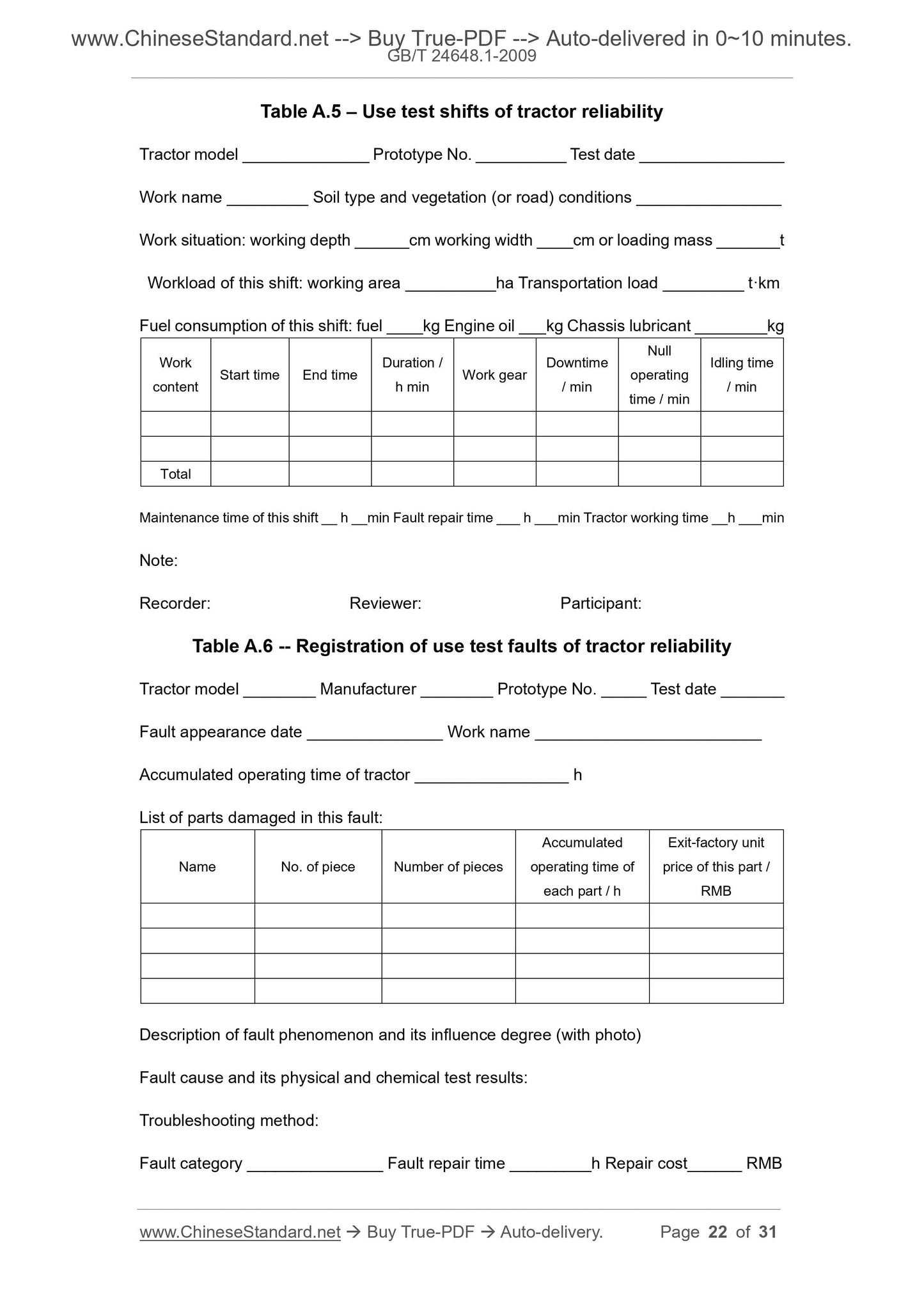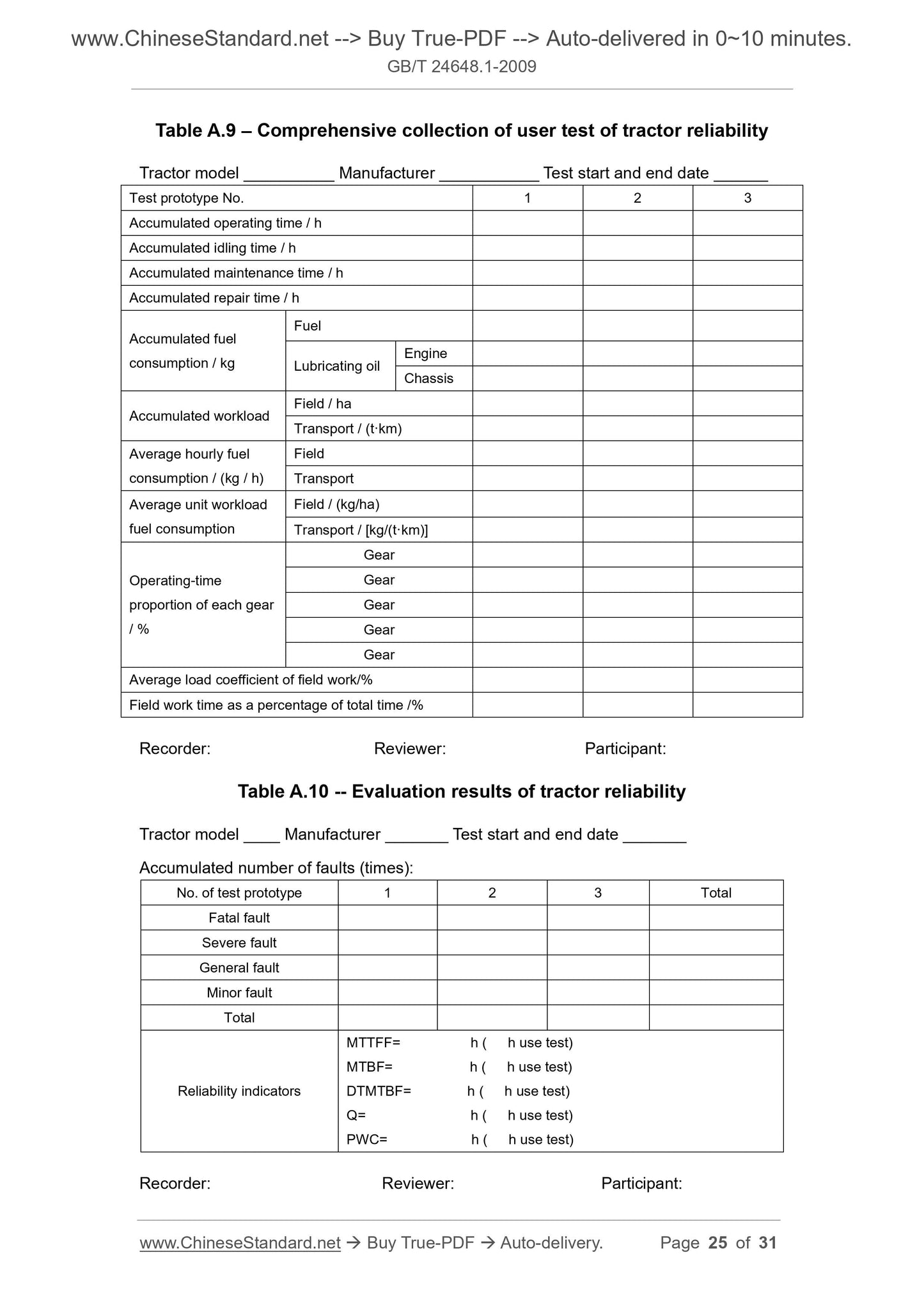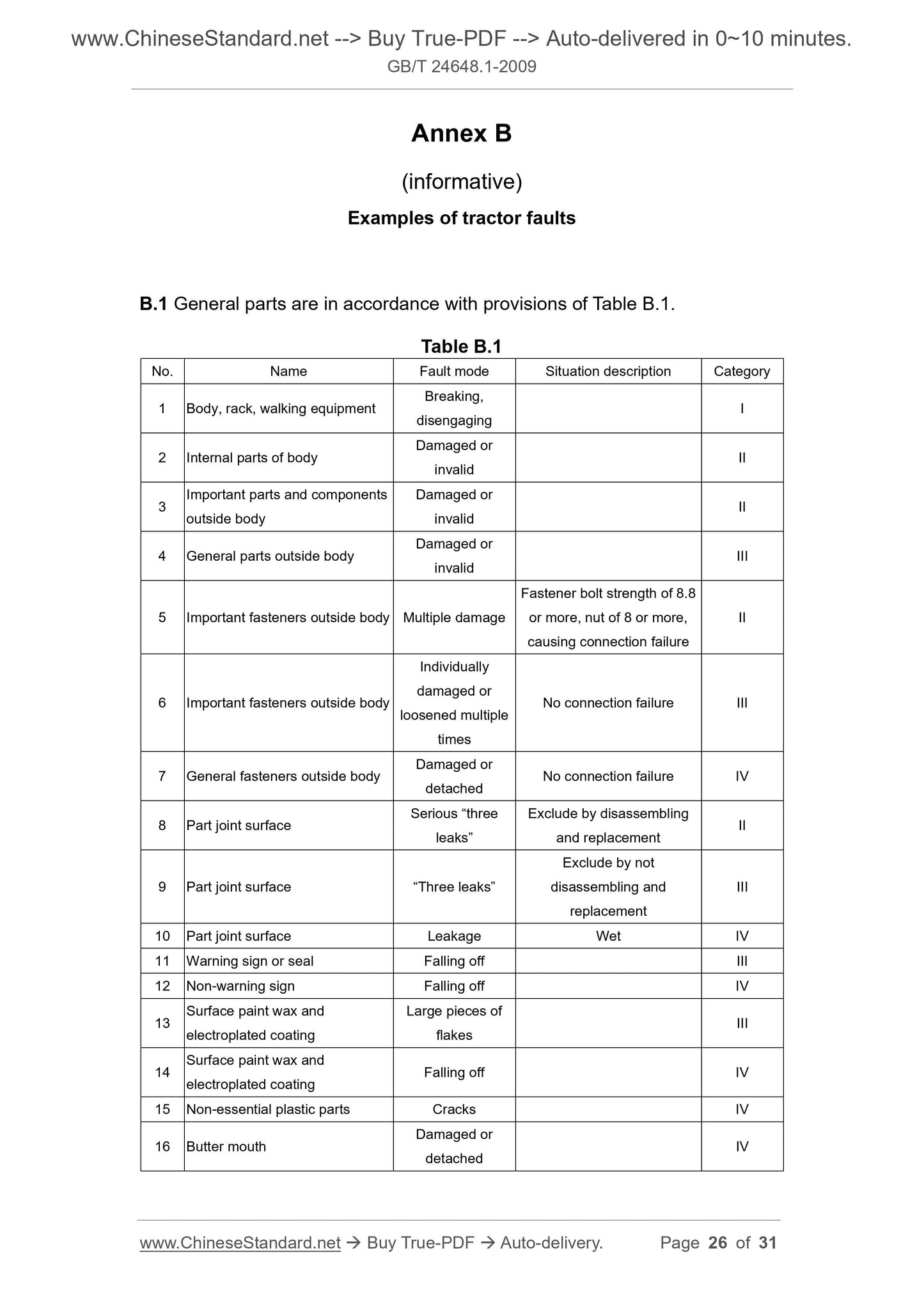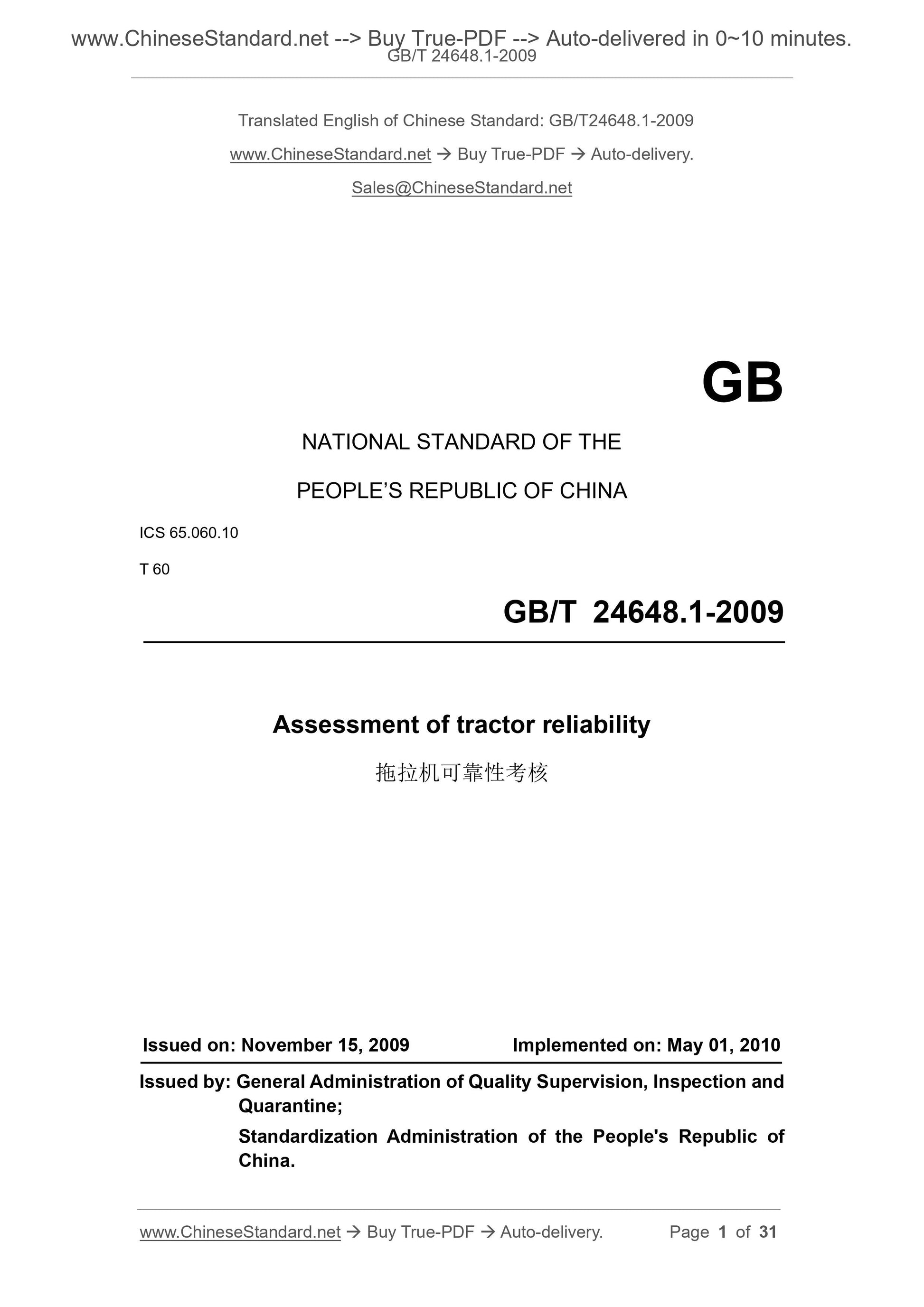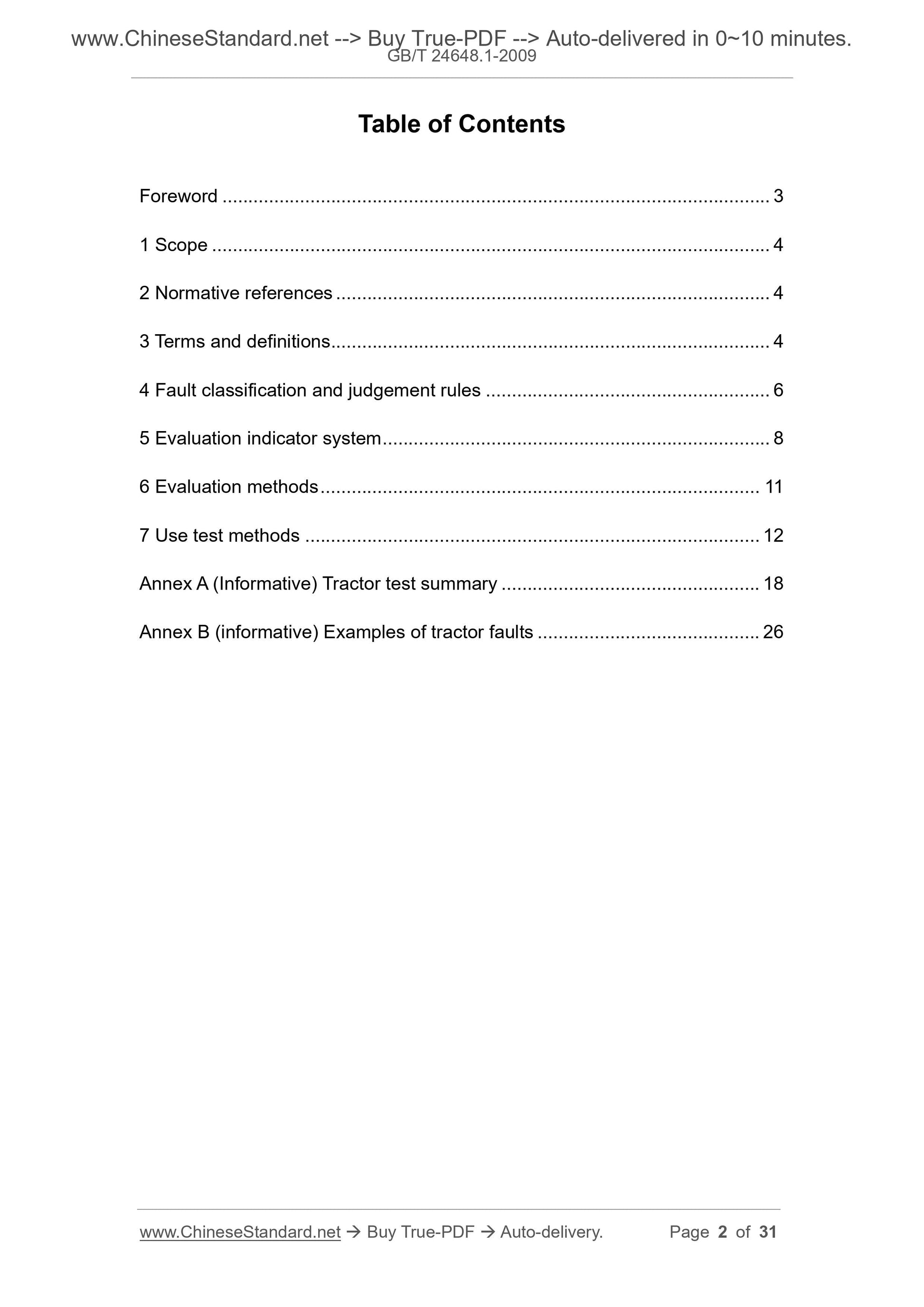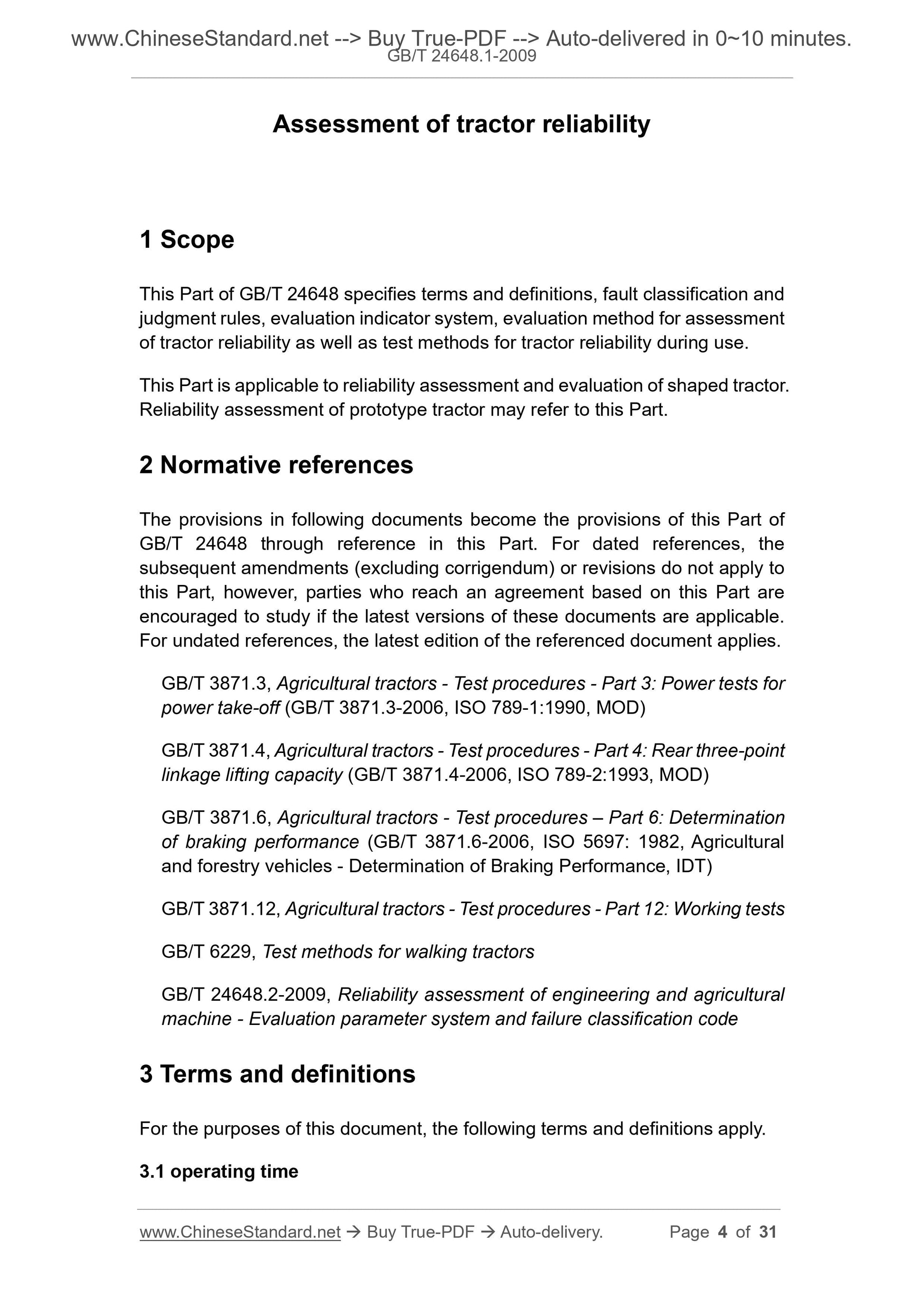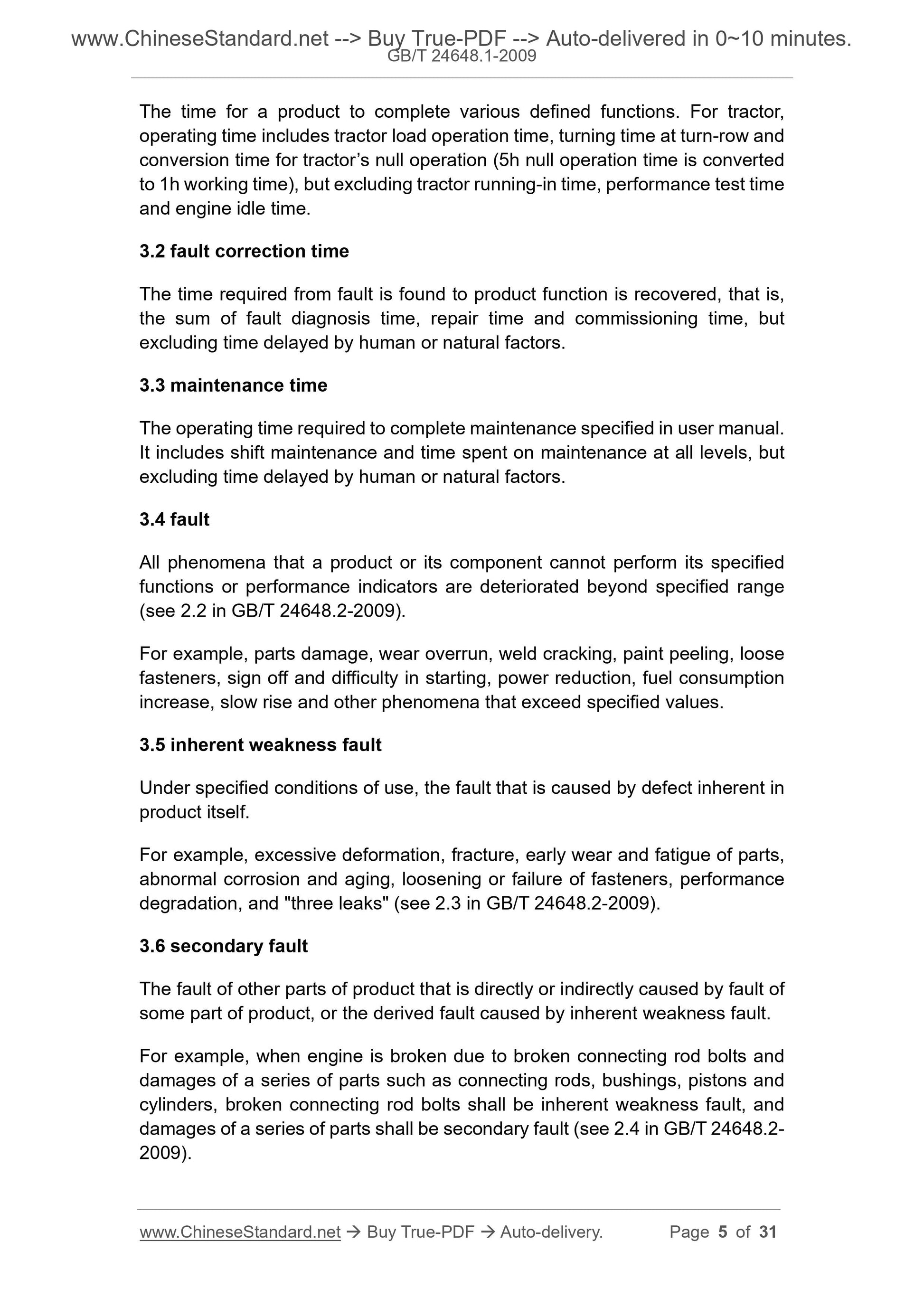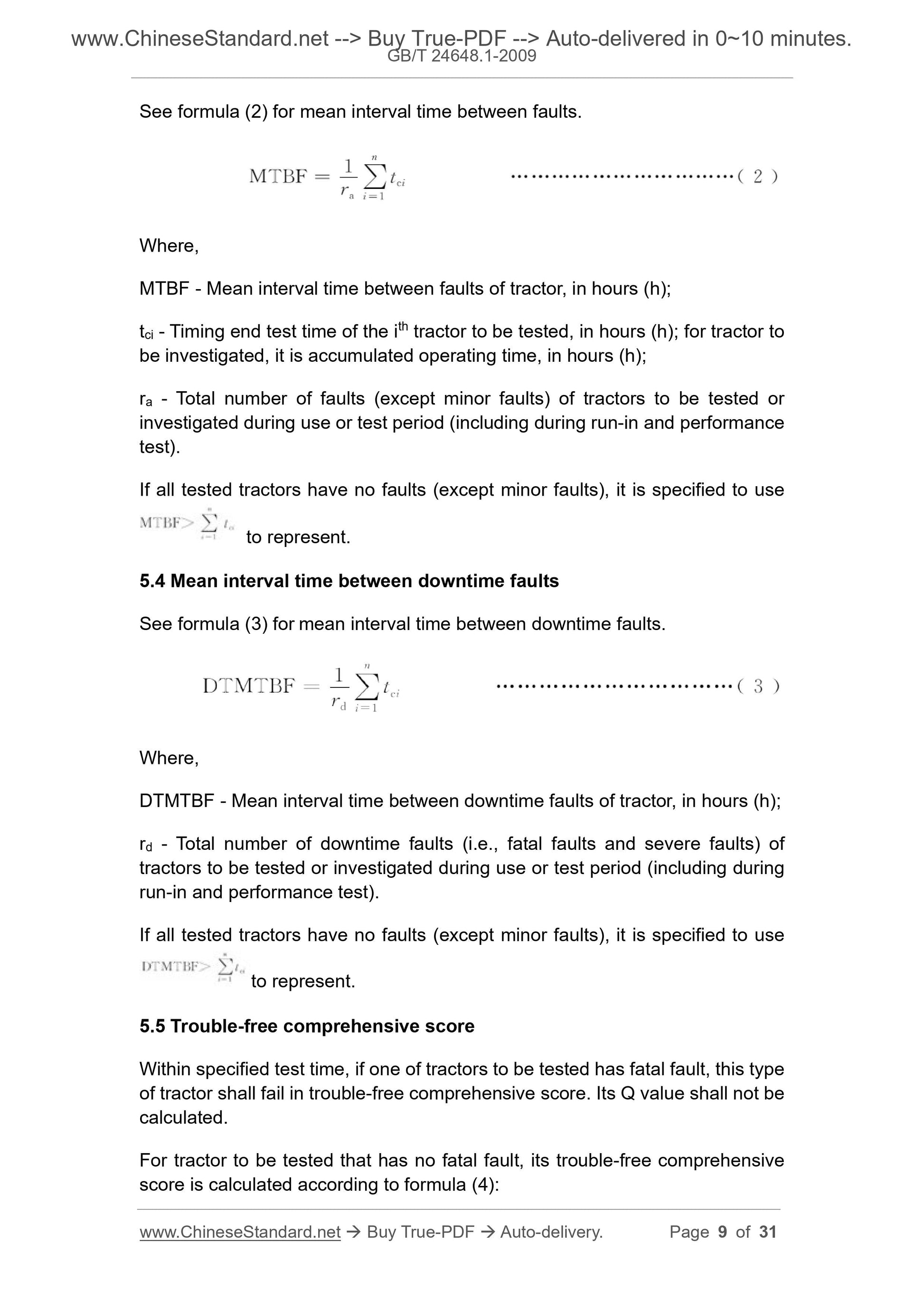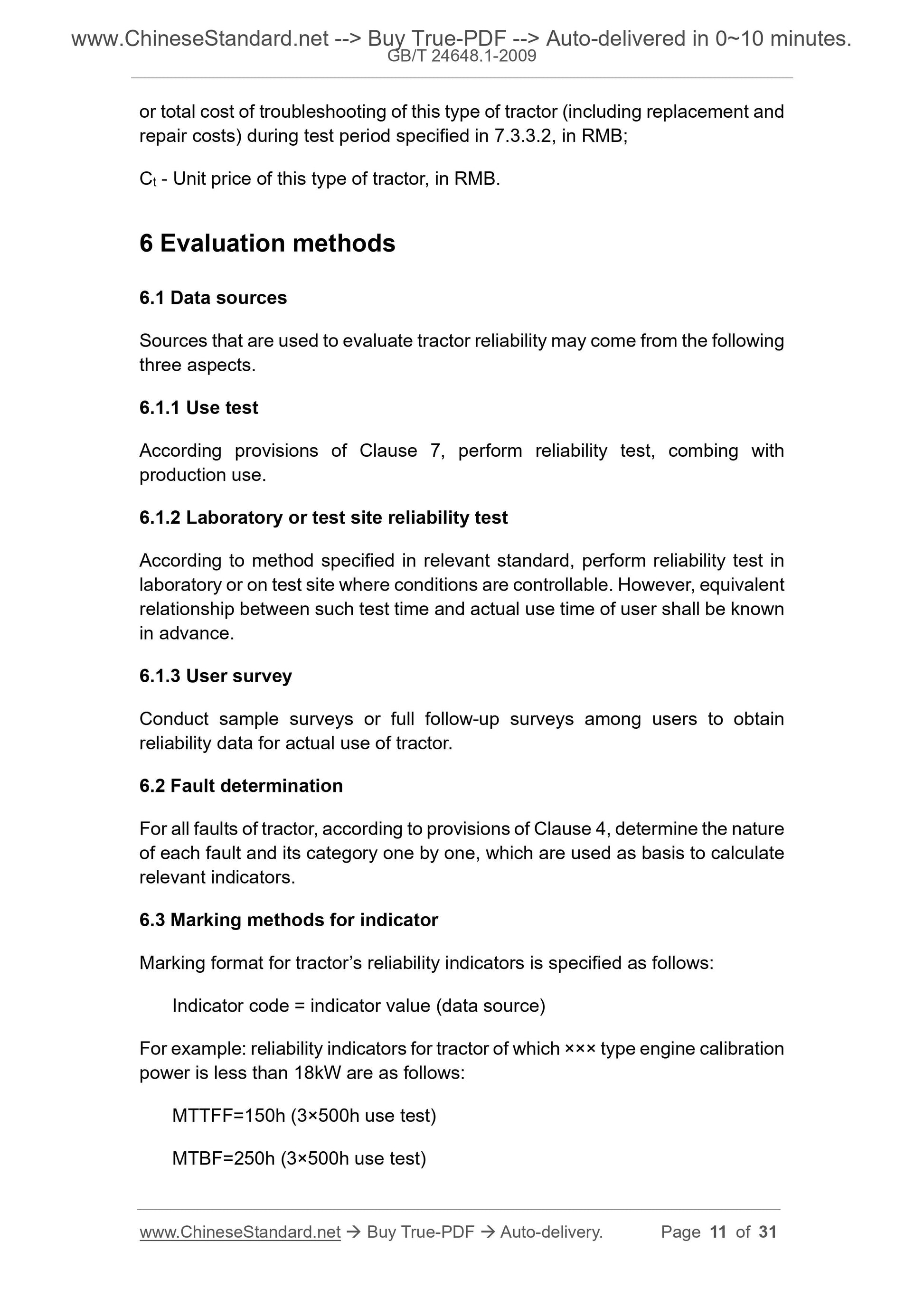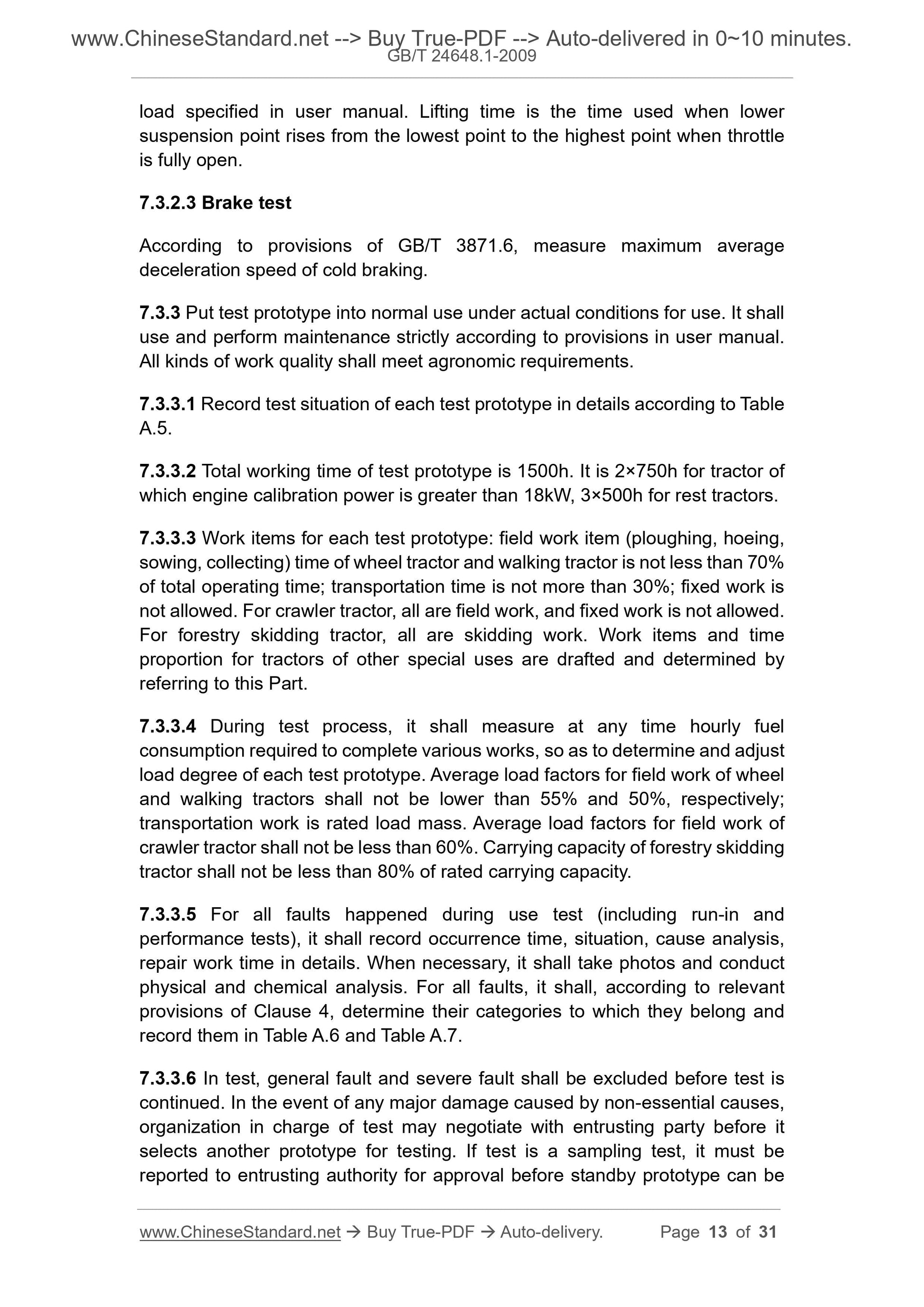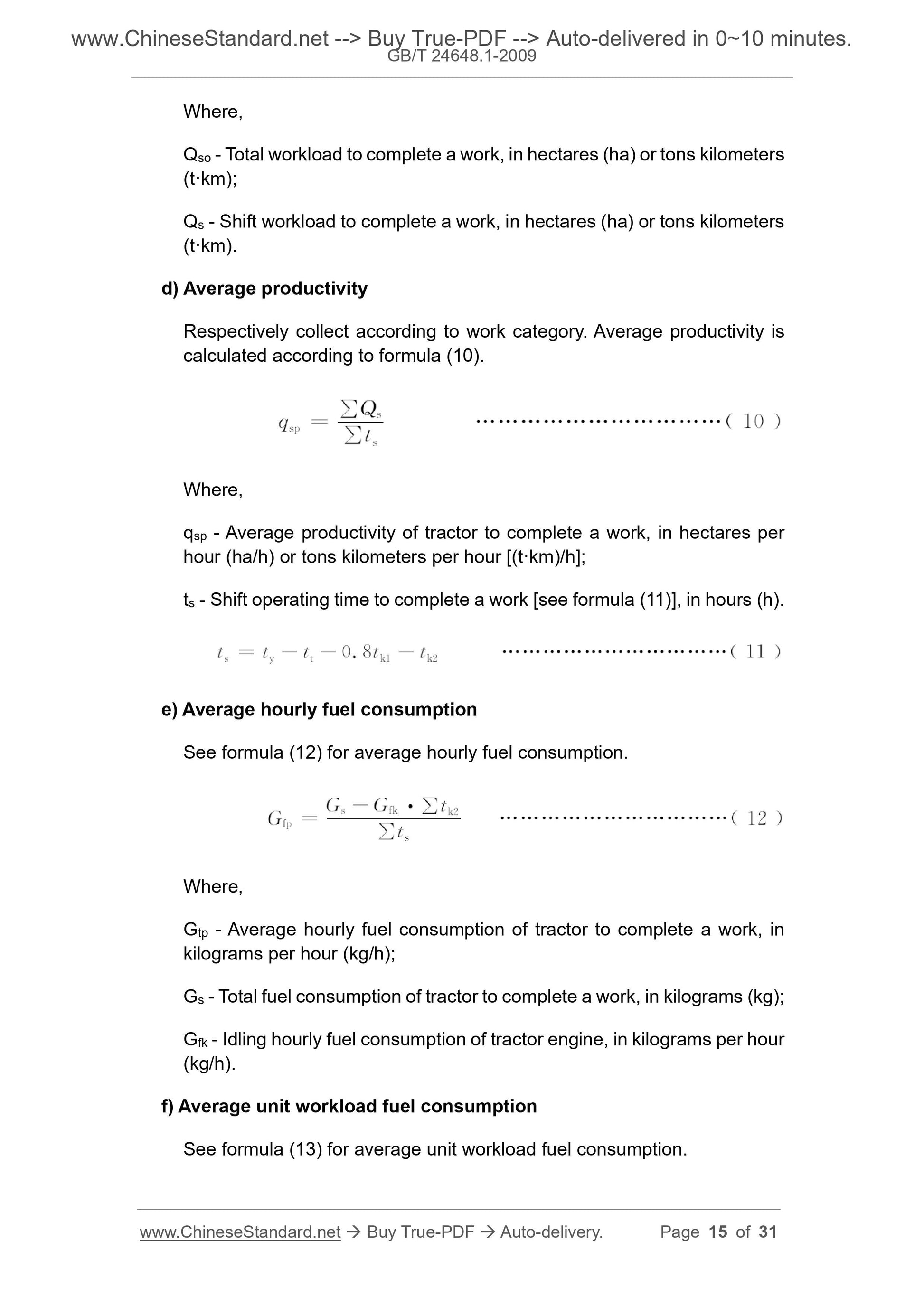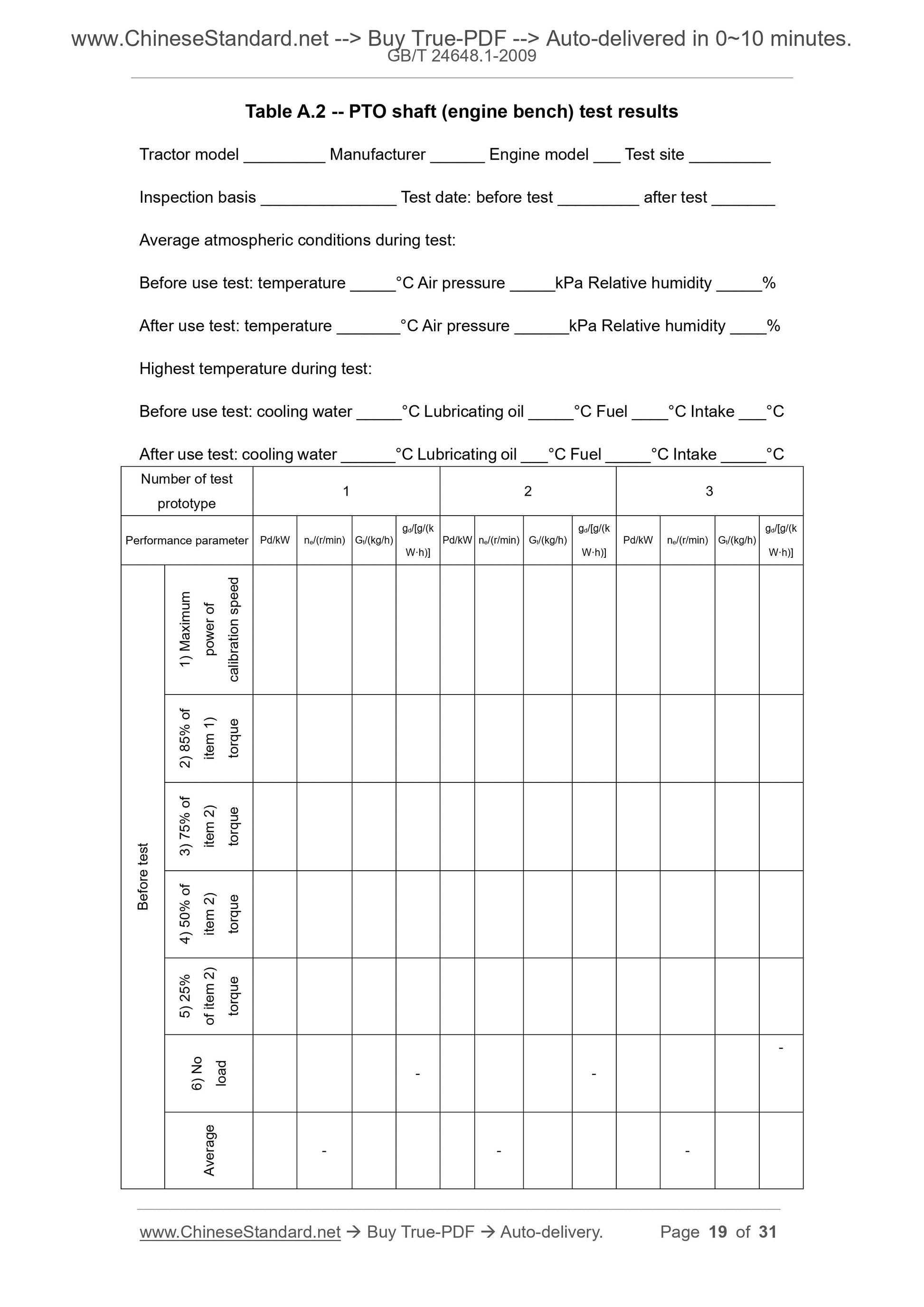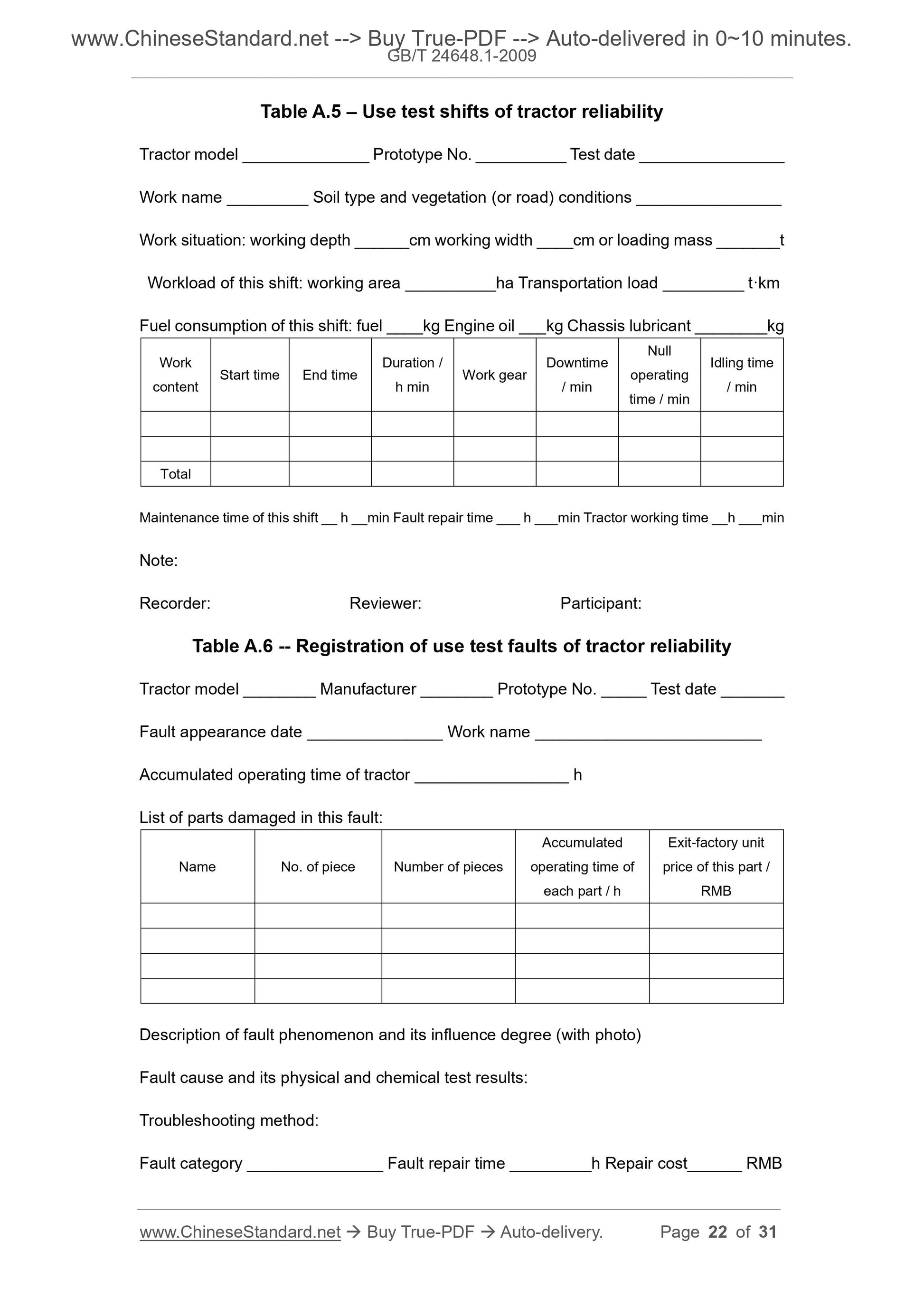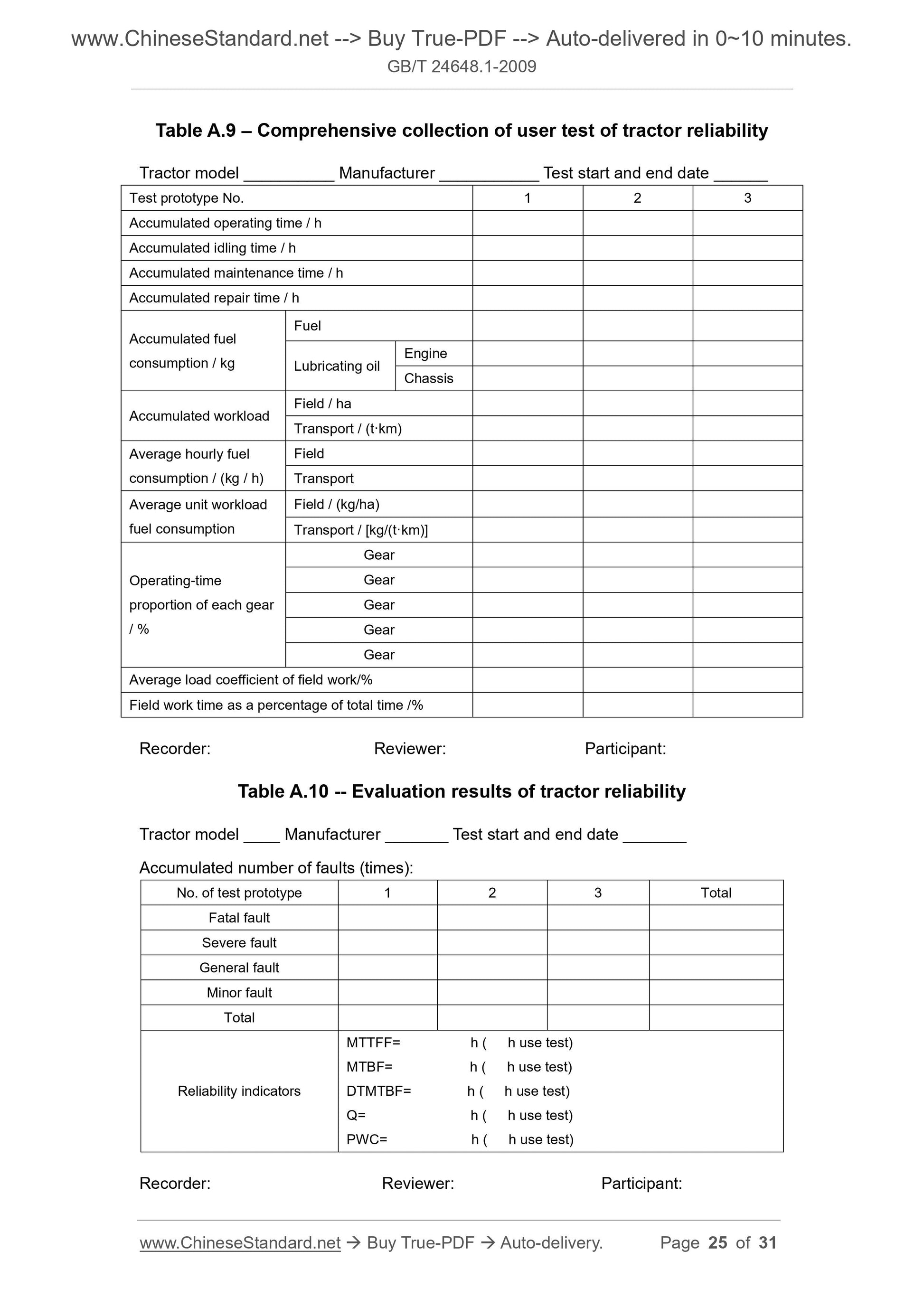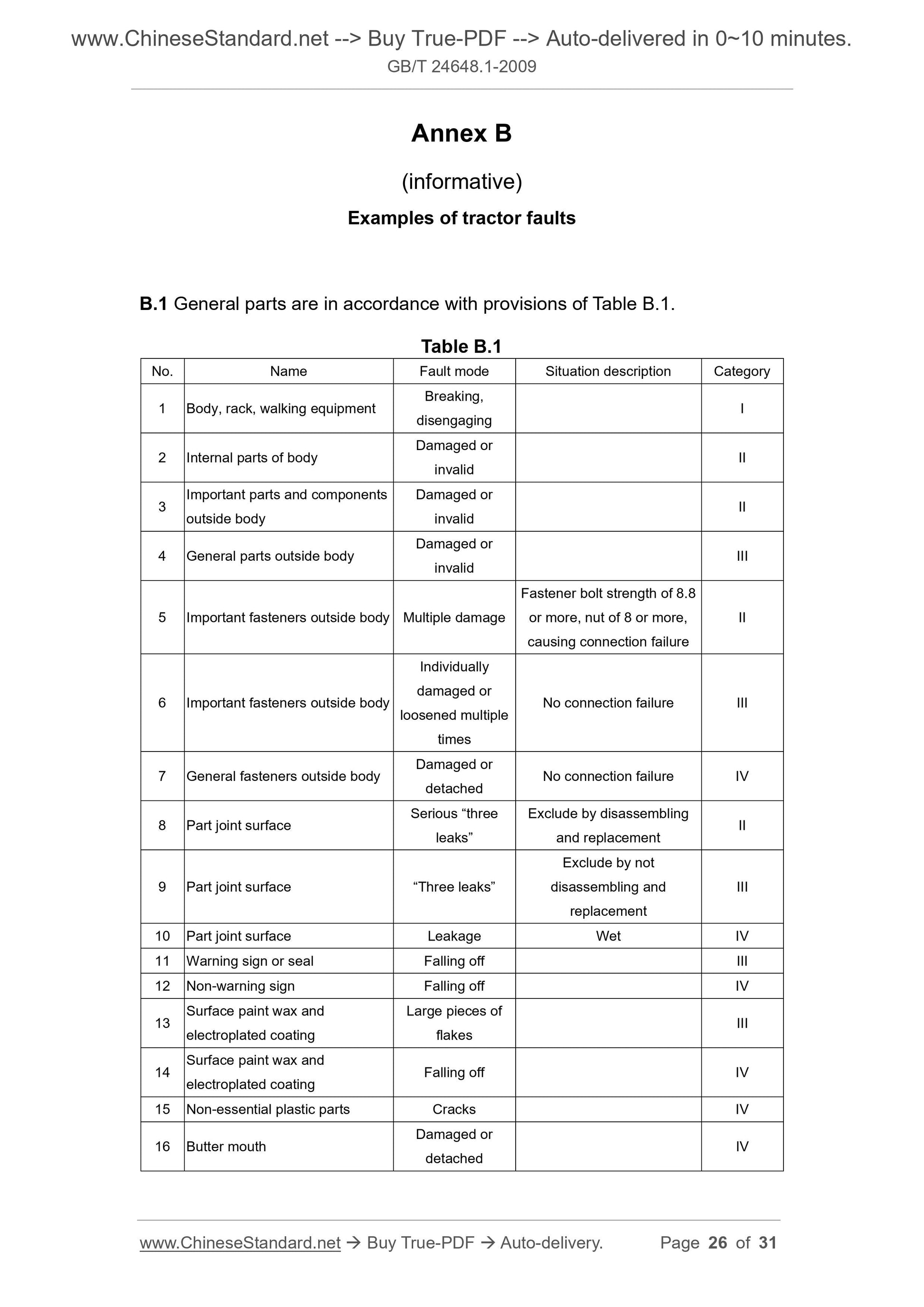1
/
of
12
www.ChineseStandard.us -- Field Test Asia Pte. Ltd.
GB/T 24648.1-2009 English PDF (GB/T24648.1-2009)
GB/T 24648.1-2009 English PDF (GB/T24648.1-2009)
Regular price
$180.00
Regular price
Sale price
$180.00
Unit price
/
per
Shipping calculated at checkout.
Couldn't load pickup availability
GB/T 24648.1-2009: Assessment of tractor reliability
Delivery: 9 seconds. Download (and Email) true-PDF + Invoice.Get Quotation: Click GB/T 24648.1-2009 (Self-service in 1-minute)
Newer / historical versions: GB/T 24648.1-2009
Preview True-PDF
Scope
This Part of GB/T 24648 specifies terms and definitions, fault classification andjudgment rules, evaluation indicator system, evaluation method for assessment
of tractor reliability as well as test methods for tractor reliability during use.
This Part is applicable to reliability assessment and evaluation of shaped tractor.
Reliability assessment of prototype tractor may refer to this Part.
Basic Data
| Standard ID | GB/T 24648.1-2009 (GB/T24648.1-2009) |
| Description (Translated English) | Assessment of tractor reliability |
| Sector / Industry | National Standard (Recommended) |
| Classification of Chinese Standard | T60 |
| Classification of International Standard | 65.060.10 |
| Word Count Estimation | 20,291 |
| Date of Issue | 2009-11-15 |
| Date of Implementation | 2010-05-01 |
| Quoted Standard | GB/T 3871.3; GB/T 3871.4; GB/T 3871.6; GB/T 3871.12; GB/T 6229; GB/T 24648.2-2009 |
| Regulation (derived from) | National Standard Approval Announcement 2009 No.13 (Total No.153) |
| Issuing agency(ies) | General Administration of Quality Supervision, Inspection and Quarantine of the People's Republic of China, Standardization Administration of the People's Republic of China |
| Summary | This standard specifies the terms and definitions tractor reliability assessment, fault classification and judgment rule, assessment index system, assessment methods and the use of tractors reliability test methods. This section applies to the tractor has been finalized for the evaluation of the reliability, the reliability of the prototype trial assessment can also be implemented by reference. |
Share
